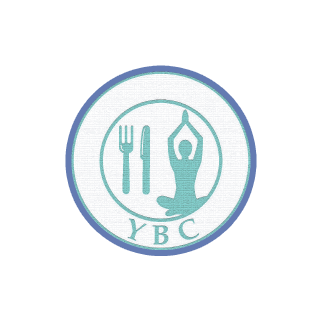How the Pelvic Floor Works During Your Yoga Practice by Rosie Cardale
/Ever wondered what the pelvic floor is doing during your yoga practice? Or even where your pelvic floor actually is?! Check out this guest blog from Chartered Physiotherapist Rosie Cardale.
Those original yoga Gurus were well ahead of the curve when it comes to the pelvic floor, the mula bandha, In Sanskrit, ‘mula’ means root; ‘bandha’ means a lock or binding, refers to the root or base of the spine – exactly where the pelvic floor attaches to and can be located. The pelvic floor is an amazing complex of muscles, this blog is going to tell you all you need to know about how it works for you in your yoga practice.
I’ve been a fan of yoga for several years and love so many aspects of the practice, I really fell in love with it during my yoga teacher training I completed in Greece in 2017. I loved the way it complimented my work as a physiotherapist. Since my yoga training I have specialized in an area of physiotherapy called women’s health or pelvic health, so I see and treat all things that change or become a problem in and around the pelvis, the pelvic floor being one of those things!
The pelvic floor is an amazing complex of muscles and connective tissue that sits deep within the pelvis. It attaches to most of the bony areas in the pelvis - the coccyx, the ilium, and the pubic bone and forms a hammock like shape. It has several very important jobs that it is helping you with all day every day. These functions are to control your bladder with when and how it empties and prevents you from leaking urine. With your bowel habits and the control of this too. It provides an upward support to your pelvic organs and provides you with your sexual function as well.
As I have said, it is working all the time, so as you read this, it is likely performing most of the functions mentioned above, unless you are sitting on the loo to read this blog post!! It is also therefore working for you without you thinking about it during daily life but also your yoga practice – how incredible is that?
It works in synchronicity with your diaphragm, so when you inhale the pelvic floor will naturally relax a little (without losing all its resting tone) and it will gently contract as you exhale.
The pelvic floor, as is the same with all muscles, needs to have both an ability to contract and relax, that’s how we get function, strength, and power from our muscles - in both their contraction and relaxation.
So, all that pranayama (breathing) work you are doing at the start of the class and throughout it will be helping the muscles ability to relax and contract – you’ve had a pelvic floor workout before you have even started moving!
It also must maintain its function with movement too and it has an involuntary reflex that will anticipate any movement that is about to happen as the pressure in your abdomen rises. On anticipating this it will increase the tone or contraction in the muscle before these movements happen – I told you, it’s a very clever muscle.
Because of this clever reflex, you therefore don’t need to ‘contract’ your pelvic floor during your yoga movements – phew one less thing to think about during that vinyasa class!
There are a few exceptions to this rule, if you experience any symptoms of pelvic floor dysfunction during your yoga practice, then complimenting the movement or posture with a pelvic floor contraction where you feel this sensation could help reduce this. So, for instance if you feel that you leak urine as you hop forward from a down dog to mountain pose then a small pelvic floor contraction could help you here.
But now I hear you ask how you do a pelvic floor squeeze! Well, most of the muscle mass (for both boys and girls) sits behind the back passage, so I often get people to imagine stopping yourself from breaking wind or smuggling diamonds through your back passage! Remember the muscle works with your breathing so an exhale can often help you to feel this rise in the muscle. You should be able to talk, breathe or sing whilst you have this muscle contracted and should also be able to feel it relax when you ‘let it go’ too. It’s advised to do pelvic floor exercises every day, holding for ‘long’ contractions for up to 10 seconds and repeating this 10 times and then also doing 10 quick contractions daily too.
So how does this information influence your yoga practice? I have gone to several yoga classes recently where there has been a mention of the mula bandha or the pelvic floor, which is great that it is something being spoken about, and the awareness of this muscle is becoming more widely known. However, we don’t necessarily need to contract it all the time or worry that if we aren’t thinking about it when we move that it isn’t working. Here are my three top tips for how you can influence it with your practice:
Only ever ‘contract’ or engage it with static postures or poses – it is hard to engage it when you are moving, particularly during a chaturanga (unless you're experiencing pelvic floor dysfunction during your practice, as mentioned above)
If you want to use your yoga to help strengthen your pelvic floor, then focus on influencing your breathing more than your pelvic floor. Remember your diaphragm can influence your pelvic floor too and good dynamic movement will really help this muscle – try to avoid holding your breath during your practice.
If you are struggling to feel it engage in static poses then start trying to feel it in a lying position, then try seated poses and then finally standing poses. It progressively works harder in all these postures – sitting on a yoga block to engage and relax your muscle can help give you some biofeedback to know if you’re doing the right thing. You should be able to feel the space between your sit bones gently lift away from the block and then fall back onto the block as you let it relax.
Happy yoga practice!
Rosie works from Bristol Physiotherapy and has become certified as an APPI matwork and reformer Pilates instructor as well as a Yoga Alliance 200YTTC instructor and applies both movement techniques and principles to her practice.
You can follow Rosie on Instagram at @mae_physiotherapy or find out more about your pelvic floor on her website www.maephysiotherapy.com.
































